Anchored in the city

Lochmarin
Thu 31 Dec 2015 05:08
We’ve taken Lochmarin into big cities before but this time it’s different. Partly it’s because we’re anchored, not in a marina, but also it’s because this little neck of the woods is so tranquil and out of the way, with lots of bush walks to explore and birds to watch and listen to, that it seems almost magical that we can look across the bay and see this: 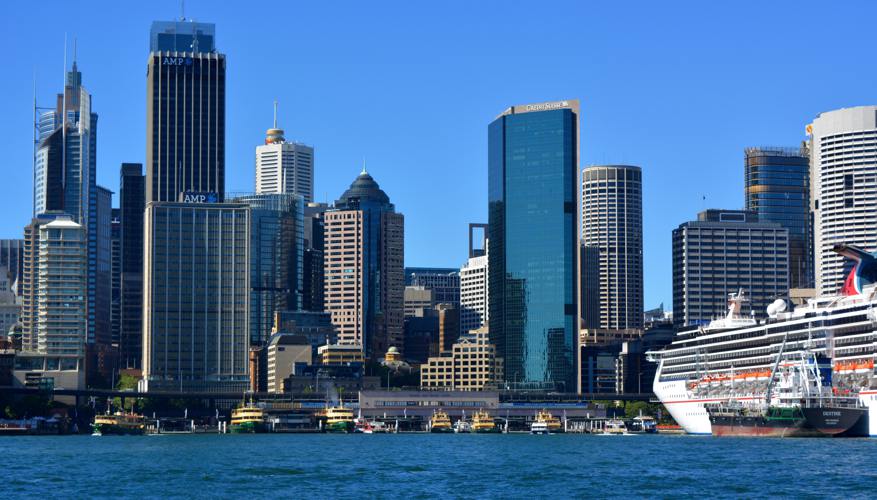 One of the problems one has when anchoring in a city is lack of places to safely leave the dinghy in order to get ashore. There’s rather a lot of rocks near the beach so at high tide we can get over the rocks to the sandy part and at low tide we can go in ‘till it’s knee deep, throw out a stern anchor and wade in. That’s fine for stretching our legs but not to leave the dinghy for long, as the state of tide changes. If we need to stay ashore longer we take it around the headland to the next bay where there’s a marina for the use of residents in the big up-market blocks of apartments. The problem is, we can’t use the marina to tie up the dinghy because it’s all locked and fenced in - we can’t get ashore from the pontoon. Instead we tie up to a ladder that goes up the side of the wharf next to the marina, putting out a stern anchor to ensure the dingy doesn’t rub against the oyster covered piles (the shells are really sharp), then we climb up the ladder, which has an overhang, you’re leaning slightly backwards as you climb, and get ashore that way. Fifteen minutes walk from there takes us to the train station and then the city’s our oyster! We’re transported off to world of glass fronted tower blocks, with old colonial buildings in between, coffee shops and designer stores, where everyone walks with their phone in their hand.  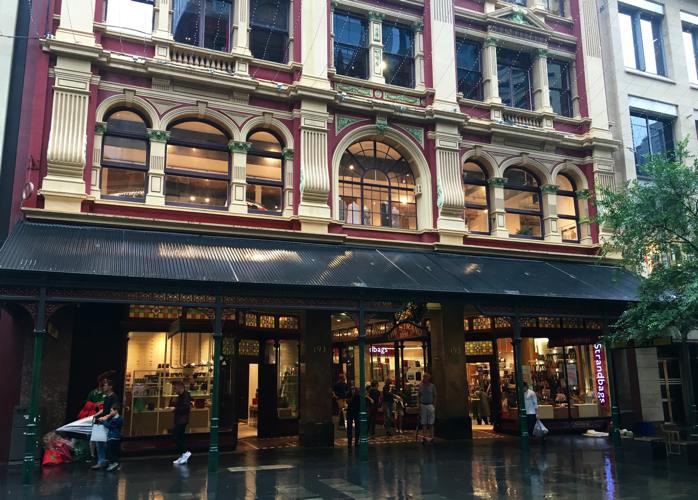 Of course, we had to go see the Opera House close up. I had always thought it was a wonderful building but I hadn’t realised that it was covered in tiles, I thought it was sheets of cladding. Up close it’s even more fantastic.  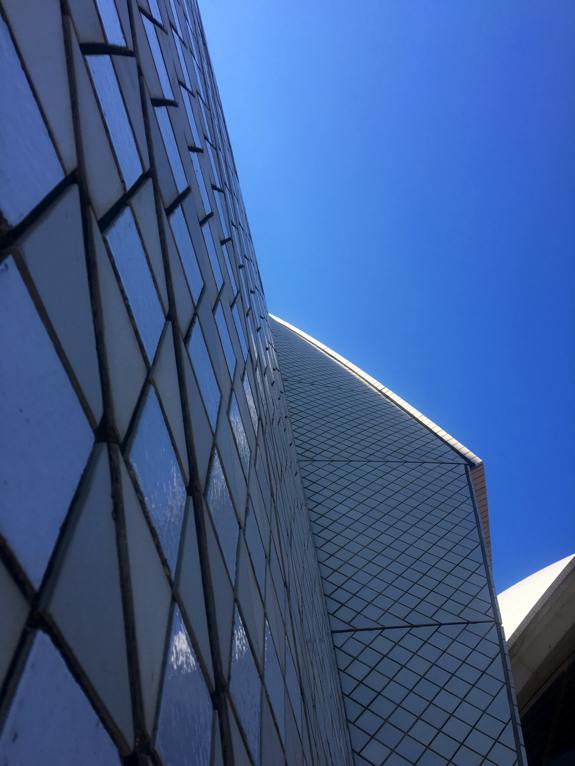  Phil’s snaps of the Opera House, showing the intricate covering of white tiles. There was another way of getting ashore: we could cross the harbour in our dinghy and tie up over at Birkenhead, on the old ferry dock. It was a great place to moor, just next to a shopping centre full of ‘factory outlet’ stores, but, more importantly, it was easy for the Byamees, Joyce, Paul and Darien, to meet up with us. We met them first in Colombia, at Christmas time two years ago, and we were delighted to see them again. The intrepid dinghy voyage across the bay was a real buzz though. Every kind of craft were out using the water: giant racing yachts practicing for the Sydney-Hobart race; sailing dinghies racing around the buoys, spinnakers billowing; ferries charging about as if they owned the place; motor boats on the wrong side of the channel; mad ‘jet boats’ trying to scare the plastic raincoat wearing passengers on board; even brave people in kayaks or on paddle boards. You needed eyes in the back of your head, lightning reactions and nerves of steel! 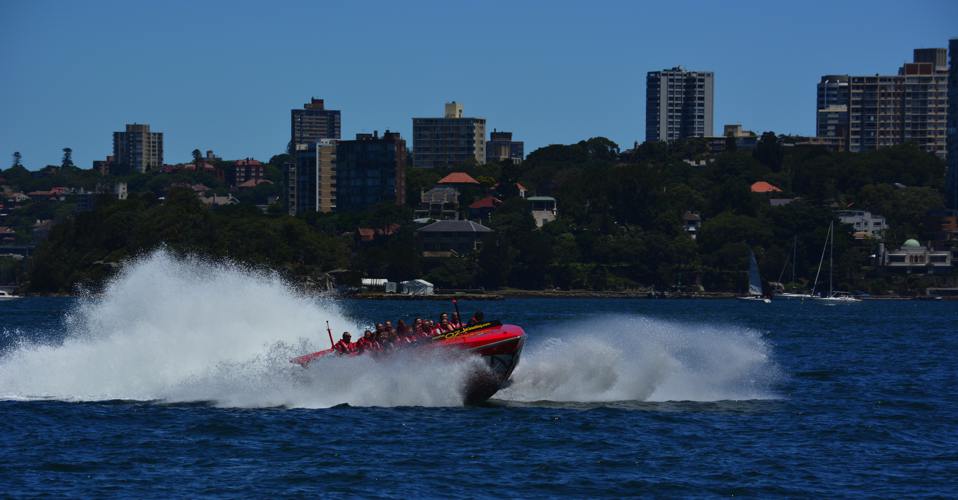 ‘fun’ in the harbour - yeah, but what about the wake they left! 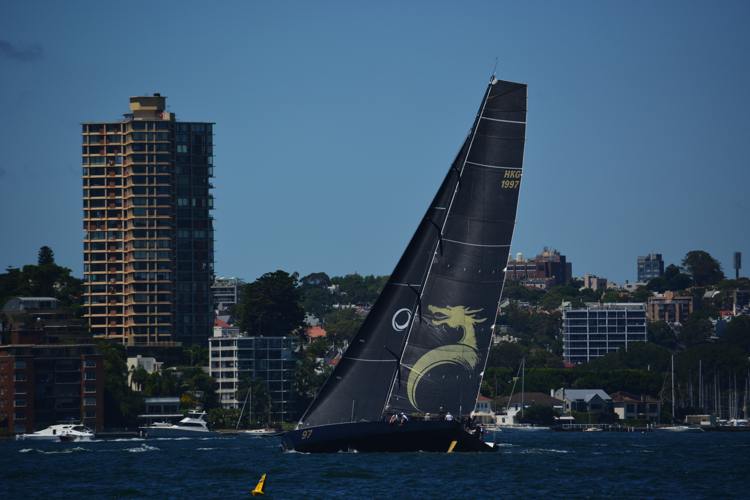 Getting some practice in. As we’d still not managed to spot a Koala we decided we wouldn’t wait for a full day at the main zoo and visited the ‘Wildlife Sydney’ mini zoo on Darling Harbour. This has just native species, which was what interested us most. Although it can be hard to see animals in captivity, it was delightful. We saw Tasmanian Devils, a wombat, snakes and goannas, frogs and butterflies. 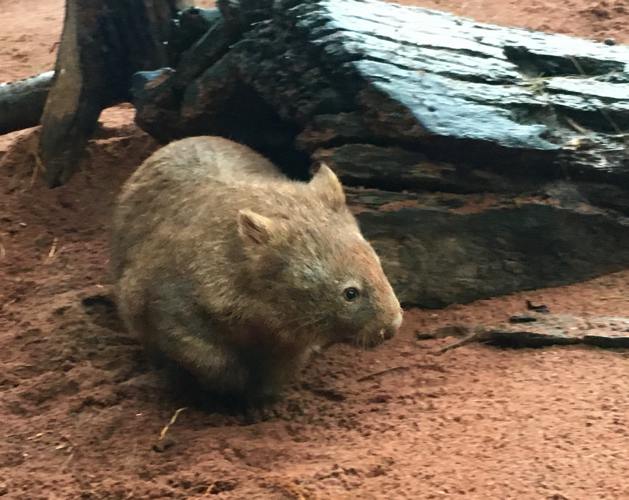 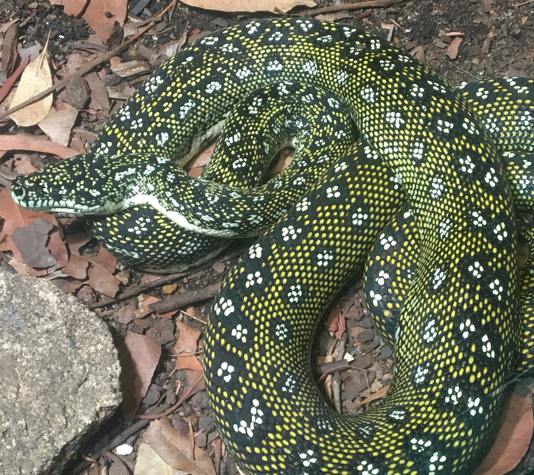 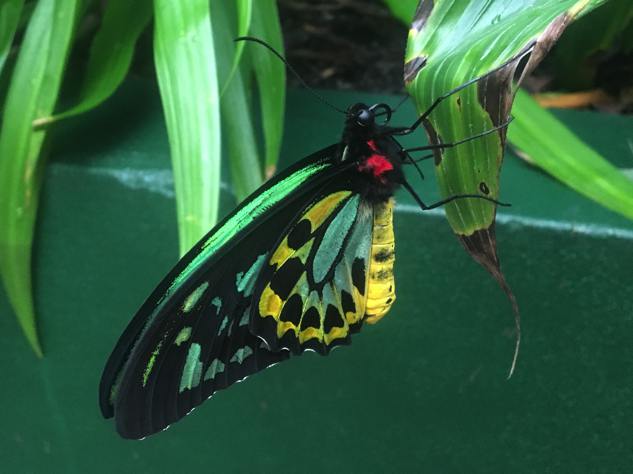 Mr Wombat, a beautiful python and Phil’s great shot of an unidentified, but stunning, butterfly. There were the cutest little wallabies and desert jumping mice. We saw the fantastic cassowary, like an emu, but with a horn on top of his head and bright blue and red necks. 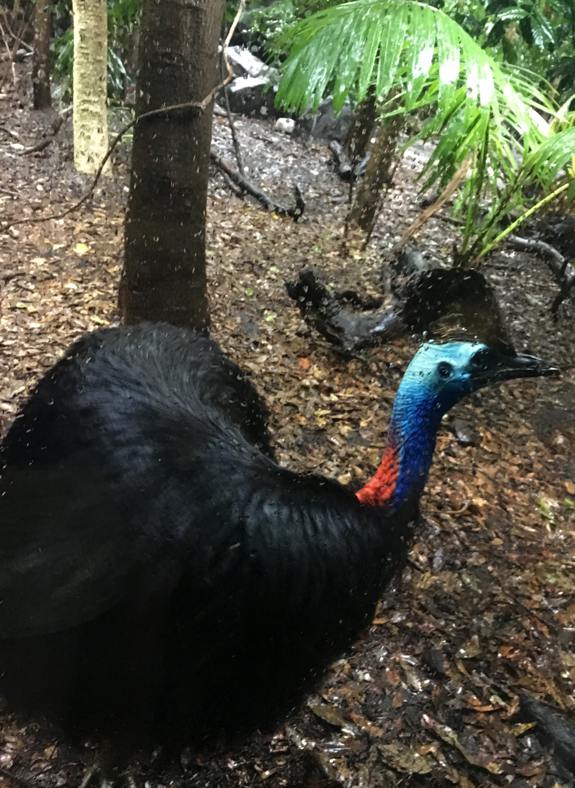  A Cassowary. Yep, I didn’t know they existed either. Apparently they have a middle toe that could disembowel you with one swipe! These frogs are real, not ceramic, hard to believe. And last, but by no means least, we finally saw the koala. They are smaller than I imagined and very very cute, as well as being rather sleepy. When they do wake up they spread their fluffy ears and, as it was raining, they shook them to get the wet off. Adorable. An interesting piece of information is that they have a plate of cartilage over their backside, a sort of mobile chair, to stop them bruising themselves from sitting on a narrow branch sleeping for 20 out of 24 hours.  It was when I was watching one sleepily chewing on a gum leaves that I realised that all these creatures (apart from the cassowary. He’s almost inconceivable) were familiar from my childhood. If I was fighting with my sister, or playing and making too much noise, I would be sent to sleep in my brothers room (he was away at boarding school). By his bed was a bookshelf on which was a big red volume of “The adventures of Blinky Bill”, a brave little koala bear (they called them bears in those days), along with his friends and companions of the Australian bush. I learnt all about Mr Wombat and Mrs Wallaby, Splodge the Kangaroo and Miss Frog’s school for tadpoles. Inevitably the bedside light would be spotted and I’d be in more trouble for reading when I was already in disgrace but not before I’d discovered another world of mysterious animals. One animal we saw which I hope we don’t see again, but if we do I certainly hope it isn’t as close, was the magnificent saltwater crocodile, those most patient of animals who have been known to wait for hours by a tied up dinghy, waiting for the owners wade into the water when they push the dinghy out. Shivers. By the way, you may not have noticed, but I did: there wasn’t a duck billed platypus to be seen. They’re having us on…  Phil took this through the glass sided tank, showing how only the eyes and nose break the surface, like the tip of an iceberg. |